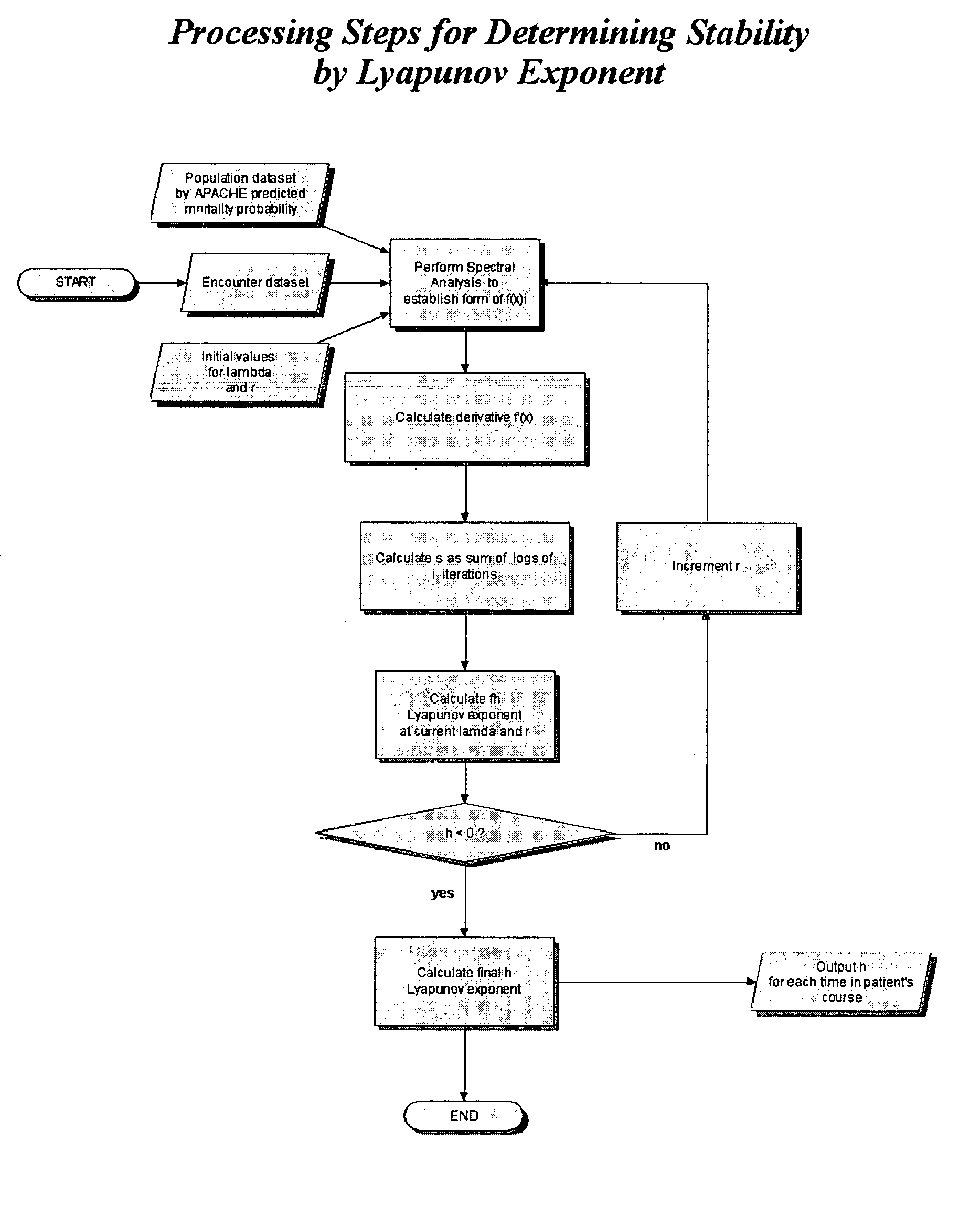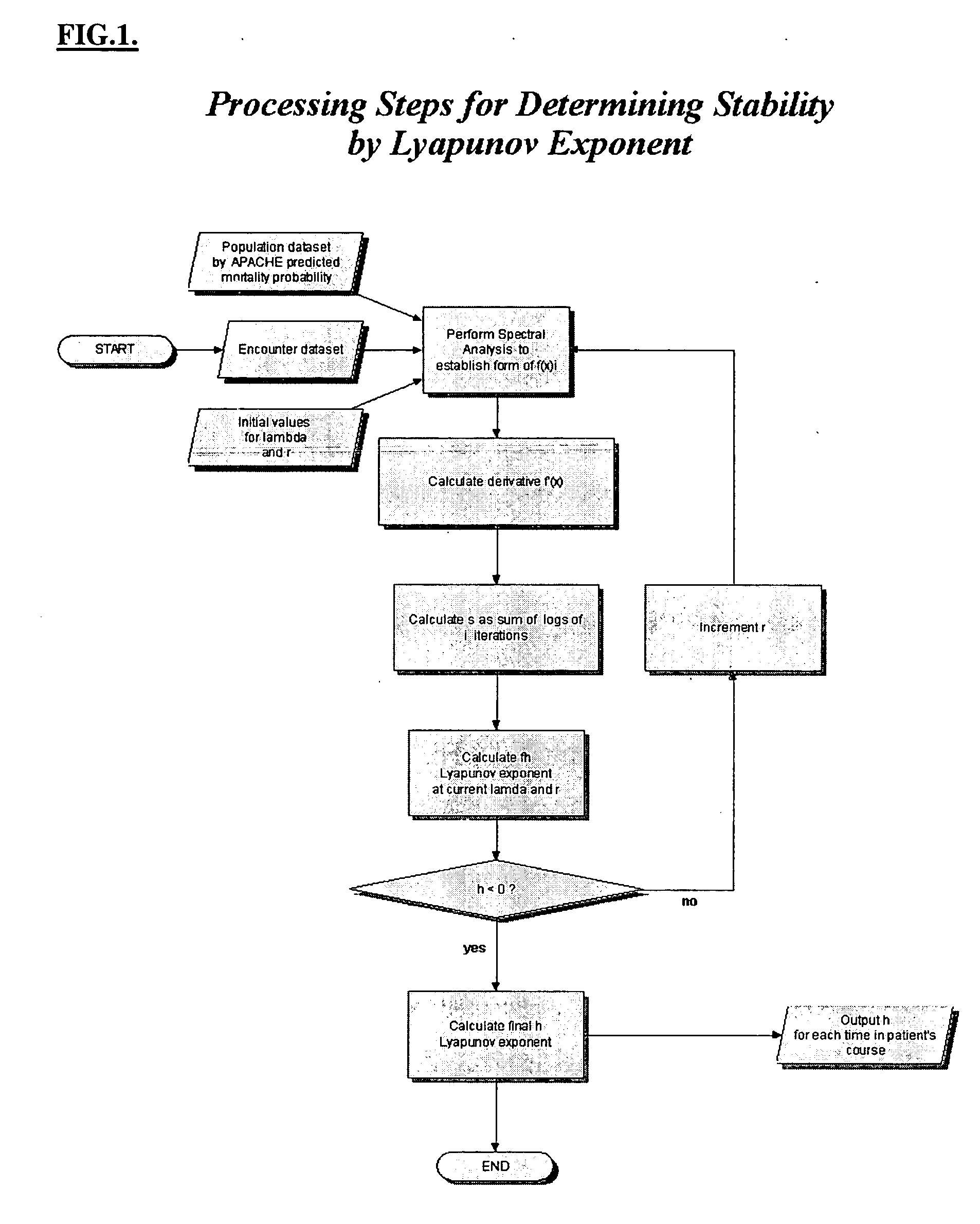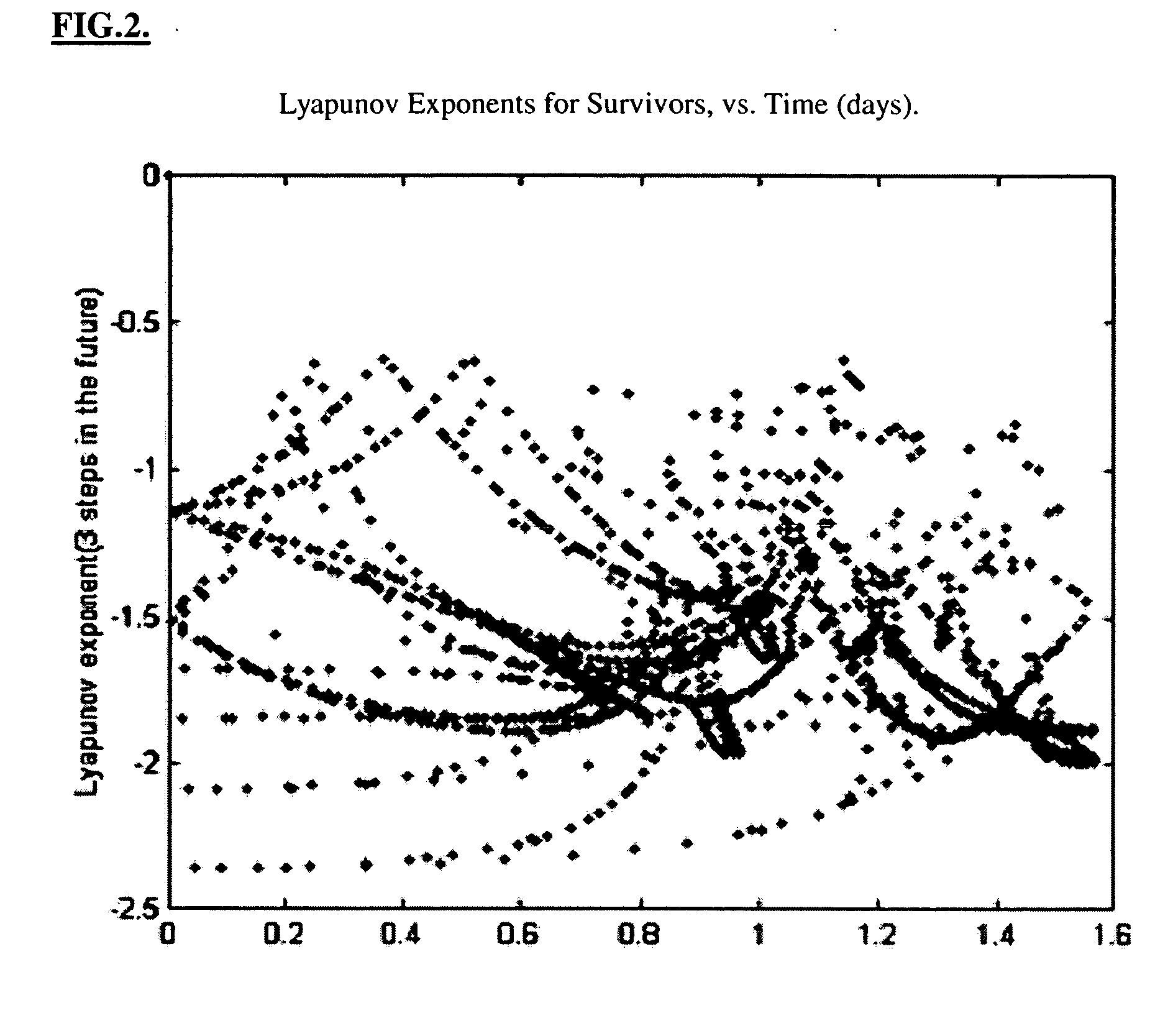Computerized system and method for predicting mortality risk using a lyapunov stability classifier
a technology of stability classifier and computerized system, which is applied in the field of computerized system and method for predicting mortality risk using a stability classifier, can solve the problems of facing clinicians, knowing when further treatment is futile and no longer appropriate, unnecessary pain and loss of dignity for patients
- Summary
- Abstract
- Description
- Claims
- Application Information
AI Technical Summary
Benefits of technology
Problems solved by technology
Method used
Image
Examples
Embodiment Construction
[0040] The present invention is a method and system mitigating the limitations enumerated above and suitable for an improved system and method for predicting mortality risk using a Lyapunov stability classifier. The method and system are preferably implemented in one of a variety of known general purpose or special purpose computing system environments or configurations. Those of ordinary skill in the art will appreciate that any of a variety of components and interconnection are well known, and details concerning the construction need not be disclosed in connection with the present invention.
[0041] When “multiple organ systems failure” (MOSF) is defined as severe physiologic abnormalities, it is found to arise in the context of a wide variety of diseases. The distinguishing feature of MOSF appears not to be the underlying etiology, but the uniform and frequently fatal outcome once it develops. This indicates that MOSF may represent a final common pathway to death rather than a cli...
PUM
 Login to View More
Login to View More Abstract
Description
Claims
Application Information
 Login to View More
Login to View More - R&D
- Intellectual Property
- Life Sciences
- Materials
- Tech Scout
- Unparalleled Data Quality
- Higher Quality Content
- 60% Fewer Hallucinations
Browse by: Latest US Patents, China's latest patents, Technical Efficacy Thesaurus, Application Domain, Technology Topic, Popular Technical Reports.
© 2025 PatSnap. All rights reserved.Legal|Privacy policy|Modern Slavery Act Transparency Statement|Sitemap|About US| Contact US: help@patsnap.com



